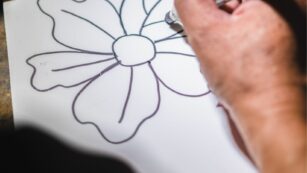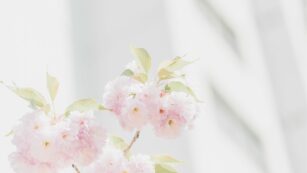
Dibujo:iiwd7u4dpig= Flores
Drawing flowers offers a perfect blend of creativity and tranquility, inviting artists of all skill levels to explore the beauty of nature through  art. With their intricate patterns and vibrant colors, flowers provide endless inspiration for those looking to enhance their artistic abilities. Whether it’s the delicate petals of a rose or the bold structure of a sunflower, each bloom presents a unique challenge and opportunity for self-expression.
art. With their intricate patterns and vibrant colors, flowers provide endless inspiration for those looking to enhance their artistic abilities. Whether it’s the delicate petals of a rose or the bold structure of a sunflower, each bloom presents a unique challenge and opportunity for self-expression.
For beginners and seasoned artists alike, mastering the art of drawing flowers can be both rewarding and meditative. It encourages observation and attention to detail, helping artists develop a keen eye for form and texture. As they experiment with different techniques and mediums, artists can capture the essence of each flower, bringing their unique vision to life on paper. In this article, discover essential tips and techniques to elevate your floral drawings and unlock your creative potential.
Understanding Flower Anatomy
Recognizing the basic structure of a flower can significantly improve an artist’s ability to capture its essence. Flowers usually consist of several key parts: petals, sepals, stamens, and pistils. Petals, often the most colorful part, attract pollinators and are central to the flower’s  visual appeal. Sepals are the leafy structures beneath petals that protect the budding flower. Stamens, typically found in the flower’s center, consist of filaments and anthers, helping in pollination. Pistils are the female reproductive part, containing the stigma, style, and ovary.
visual appeal. Sepals are the leafy structures beneath petals that protect the budding flower. Stamens, typically found in the flower’s center, consist of filaments and anthers, helping in pollination. Pistils are the female reproductive part, containing the stigma, style, and ovary.
Knowing these components aids in accurate representation. For example, artists can vary the number, shape, and arrangement of petals in their drawings. Understanding the subtle differences between similar parts—like how stamens and pistils function—enhances the drawing’s authenticity. This anatomical knowledge allows artists to depict flowers with realism and depth, breathing life into their creations.
Essential Drawing Tools
Drawing flowers with precision and creativity relies heavily on using the right tools. When undertaking floral art, selecting suitable drawing materials enhances the learning and creative process.
Pencils
Artists prefer graphite pencils for flower sketches due to their versatility. Different grades range from H (hard) to B (soft) to support varied shading techniques. A combination of H pencils for light outlines and B pencils for shading offers depth and dimension. Mechanical pencils also provide consistent lines, making them ideal for intricate details in petals and leaves.
Paper
Paper choice affects texture and detail retention in drawings. Artists typically use smooth, acid-free paper for crisp lines and easy blending. Vellum and Bristol papers are popular for their durability and ability to handle erasing and layering. Choosing a surface with the right tooth ensures the pencil adheres well, which is essential for capturing the nuance in flower structure.
Erasers
Erasers are crucial for refining and adjusting floral drawings. Kneaded erasers offer precision in small areas and can be shaped for specific needs. Vinyl erasers provide clean removal of graphite without damaging the paper surface. Essential for correcting mistakes, erasers also aid in creating highlights and enhancing contrast within flower compositions.
Techniques for Drawing Flowers
Drawing flowers blends observation with technique. Artists can capture a flower’s beauty through structured steps and varied approaches.
 Starting with basic shapes simplifies the drawing process. Circles and ovals map out petals while lines form stems and veins. This framework ensures proportions and placements are accurate. By using light strokes, artists can adjust as they refine the drawing, reducing mistakes during later stages.
Starting with basic shapes simplifies the drawing process. Circles and ovals map out petals while lines form stems and veins. This framework ensures proportions and placements are accurate. By using light strokes, artists can adjust as they refine the drawing, reducing mistakes during later stages.
Details enhance realism, turning simple outlines into lifelike depictions. Using references from real flowers, artists capture the unique features of each plant, such as the serrated edges of leaves or the intricate patterns of petals. Texture techniques, like stippling or hatching, create depth and dimension, imitating the flower’s surface characteristics.
Shading adds depth, giving the drawing a three-dimensional appearance. Artists employ different pencil grades to achieve soft gradients. By observing light sources, they determine where shadows fall, enhancing realism. Highlights bring attention to high points on petals or dew drops, achieved by leaving areas lighter or using erasers selectively.
